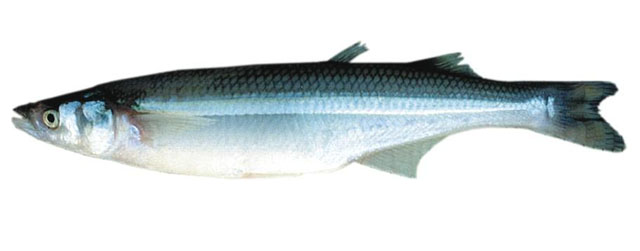| Atherinopsidae (Neotropical silversides), subfamily: Atherinopsinae |
| 50 cm TL (male/unsexed); max. reported age: 4 years |
|
pelagic-neritic; freshwater; brackish; marine; depth range - 1 m |
| South America: southern Argentina and Río de La Plata. Introduced into Europe and Asia. |
|
Dorsal spines (total): 6-6; Dorsal soft rays (total): 9-9; Anal spines: 1-1; Anal soft rays: 18-22. Body bluish brown dorsally, silvery ventrally. A broad silvery band with dark blue upper margin running from pectoral fin base to caudal fin base along midbody. Upper surface of head, pectoral and caudal fins blackish (Ref. 27363). Scales in the lateral line series above the lateral band 52-60; predorsal scales 28-35 (Ref. 47314). |
| Inhabit coastal lagoons and near estuaries, usually in freshwater (Ref. 27363, 59043). Gregarious. Adults feed on zooplankton. Mature adults spawn for the first time at 1-2 years. Eggs are deposited among aquatic vegetation (Ref. 59043). Maximum length estimated from the fact that the congeneric Odontesthes incisa has a common length of 10 cm TL. This species is a cool water predator that has affected the abundance of other species native to the lakes (Ref. 1739). The fisheries has now flourished especially in lakes and reservoirs, in Peru, Argentina, southern Brazil and Chile. |
|
Data deficient (DD); Date assessed: 06 August 2020 Ref. (130435)
|
| potential pest |
Source and more info: www.fishbase.org. For personal, classroom, and other internal use only. Not for publication.
